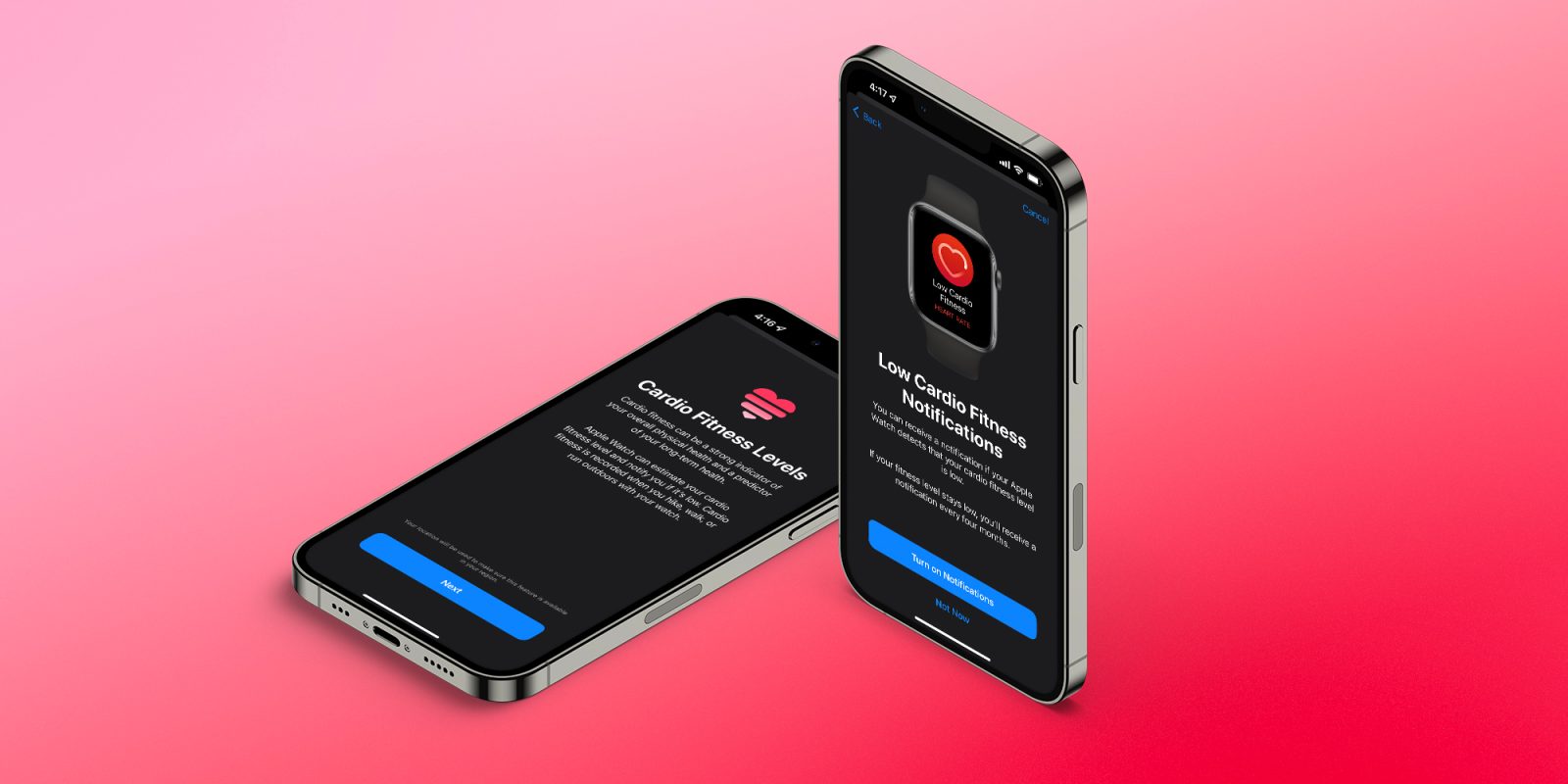
The Apple Watch’s array of different health features has alerted countless users to potentially life-threatening problems over the years. This week, a new report published in the Interactive Journal of Medical Research sheds light on a different type of Apple Watch notification that could signal bigger health problems.
This story is supported by Mosyle, the only Apple Unified Platform. Mosyle is the only solution that fully integrates five different applications on a single Apple-only platform, allowing businesses and schools to easily and automatically deploy, manage, and protect all their Apple devices. Over 38,000 organizations leverage Mosyle solutions to automate the deployment, management, and security of millions of Apple devices daily. Request a FREE account today and discover how you can put your Apple fleet on auto-pilot at a price point that is hard to believe.

Apple explains in a support document that the Apple Watch’s “Cardio Fitness” feature is a measure of your VO2 max, which represents the maximum amount of oxygen your body can consume during exercise. You can view your Cardio Fitness data at any time in the Health app on your iPhone or iPad, but the Apple Watch is also proactive about warning you if your cardio fitness levels are low for your age and sex via a notification.
As spotted by MyHealthyApple, researchers at Sackler School of Medicine in Tel-Aviv and Leviev Heart Center in Israel published the details of an intriguing new Apple Watch story earlier this week. In this case, a healthy 40-year-old began receiving repeated push notifications from their Apple Watch Series 6 about having low VO2 max levels.
After receiving repeated push notifications, the Apple Watch user went to Sheba Medical Center to seek further advice. A series of tests revealed a diagnosis of “familial nonischemic cardiomyopathy with severely reduced left ventricular systolic function.”
MyHealthyApple explains that it generally takes “many years” for symptoms to appear, potentially highlighting the usefulness of the push notifications this person received on their Apple Watch.
Familial dilated cardiomyopathy occurs when heart muscles become thin and weakened in at least one chamber of the heart, causing the chamber’s open area to enlarge (dilated).
As a result, the heart cannot pump blood as efficiently as usual. To compensate, the heart attempts to increase the amount of blood pumped through the heart, leading to further thinning and weakening of the cardiac muscle. Over time, this condition results in heart failure.
The patient underwent a comprehensive cardiac workup and VO2 levels will continue to be monitored via their Apple Watch.
The research paper published this week concludes that this case suggests that wearables like the Apple Watch to play a role in the broader monitoring of VO2 trends. The data could lead to “earlier presentation in the diagnostic workflow” for certain conditions:
This case report highlights the potential utility of peak VO2 measurements by wearable devices for early identification and screening of cardiac fitness for the general population and those at increased risk of cardiovascular disease. The integration of wearable devices into routine patient evaluation may allow for earlier presentation in the diagnostic workflow. Cardiac fitness can be serially measured using the wearable device, allowing for close monitoring of functional capacity parameters. Devices need to be used with caution, and further studies are warranted.
MyHealthyApple does caution, however, that this “could be a one-off case” and notes that most people can improve their VO2 “by increasing the intensity and frequency of their cardiovascular exercise.”
You can learn more about the Apple Watch’s Cardio Fitness and VO2 features in our complete guide.
Follow Chance: Threads, Twitter, Instagram, and Mastodon
FTC: We use income earning auto affiliate links. More.



Comments